Anatomy of an Era: Mike Mason, Part 2
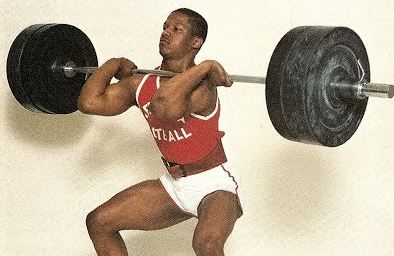
Excerpted from Chapter 74, No Place Like Nebraska: Anatomy of an Era, Vol. 2 by Paul Koch
Anatomy of an Era: Mike Mason, Part 2
Continued….
Q: You talked about confidence among the team. Would you say they were cocky or confident?
MM: They weren’t really cocky. But just the way they carried themselves, you knew they meant business out on the field. Other teams, you know they could feel it when they got in the trenches and our guys were just animals down there. It didn’t take long before there was some intimidation going on.
But I don’t think they were cocky, they were very confident in what they were doing. The coaches coached them up and they believed everything they were being taught during practice, and it was coming straight from practices to the games and they were going 110 miles per hour. They played fast because they were confident and they knew what they were doing, which is a tribute to the coaches, I think.
Q: Which makes me ask, was it an absolute bitch-kitty with Nebraska having white helmets and then other teams’ colored helmets rubbing off on ours?
MM: You know, it’s not as bad as you think. A lot of the times the paint from helmets -there’s not a whole lot of teams that actually paint their helmets- it’s an impregnated shell, which means they’re not painted. So the biggest thing you’d have (some do, like Notre Dame, obviously, who paint their helmets every week), the most stuff you’d get rubbed off from other helmets would come off of the facemasks, but that stuff came off pretty easily. They make solvents and stuff to take that kind of stuff off; it’s called War Mark Remover. You just put that on a cloth and usually that stuff just rubs right out.
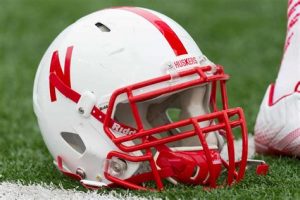
We used to have what we’d call ‘helmet parties’ on Thursday where we’d get all the student managers together and student equipment guys together and basically have a Helmet Party: clean up all the helmets, take off all the decals and replace them all. We did that every Thursday.
Q: Really?! Take the red stripe and the ‘N’ off, put a new red stripe and stick that famous block ‘N’ on again?
MM: Yep, if they needed to be. I mean, usually you replaced pretty much the whole offensive line and the whole defensive line, and after that linebackers’ and fullbacks’ helmets, those guys. At the same time you’d go through the hardware and make sure the facemasks were good. Nowadays they have two sets of helmets: the practice helmet and the game helmet, so they don’t have to do as much anymore. When I left, the equipment guys in the equipment room would have ten or eleven or twelve helmets assigned to them, so during the week we’d just clean them. When we’d have time guys would just go through them and clean them, like when they had meetings or what have you. So by the end of the week we’d have them all cleaned, so we quit having our helmet party.
Q: No more guys sitting in a circle B.S.-ing with some beers and cleaning the helmets?
MM: No, no, no, no… (laughs)
Q: Oh come on, I’m sure you had a little fridge back there somewhere in the equipment room.
MM: No, no, no. Bowl games were a different story, though. We’d have some pizza and maybe some barley-pops in the locker room the day before the game cleaning helmets. But that’s off the record, right? (laughs) And only guys who were twenty-one, too. (laughing)
Q: Do you want that off the record?
MM: Oh, I don’t care. What are they going do to me? I don’t work there anymore.
Q: Coach Osborne might give you that ‘squint’ with his eye…
MM: Yeah, maybe. (laughs)
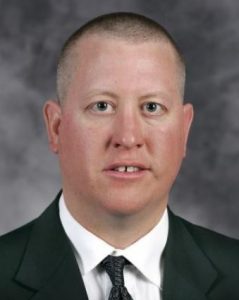
Mike Mason
Q: And speaking of, are there any memorable guys on the coaching staff who meant a lot to you from those days?
MM: Oh, Charlie (McBride) was a great guy. And Coach Samuel when he was there. I really, really liked him a lot. He actually would have a party after the Oklahoma game every other year when it was a home game. He invited me to his parties every other year. He was a down-to-earth guy, and most of the coaches were like that. They weren’t thinking they were better than you or anyone else… until you got the Callahan regime and that was destroyed.
But the coaches before them, everybody got along. It was just like family. McBride, he was just a funny guy. (laughs) He’d just go off on you one minute and ten minutes later he was telling you joke or whatever else. He was a great guy.
Q: What would Charlie go off on you for?
MM: Oh, who knows? He didn’t go off on us too often, it was usually something bothering him or something else. Just basically friendly ribbing, I would say.
Q: What about Coach Osborne?
MM: Coach Osborne? The funniest thing I could say about him was you would have to give him stuff. He’d never come and ask for a new pair of shoes or socks. Seriously! I mean, it was almost as if he was kind of embarrassed to come down and ask for anything. He never bothered us. Ever. We’d put stuff in his locker and he’d come down and say, “What’s all this stuff for?” And we’d go, ‘Coach, this is next year’s gear.’ And he’d go, “Well, we should probably get rid of the old stuff, huh?” He’d never want to keep the old stuff, either. (laughs) He was just a great guy. And boy, there again, most of the coaches were like that, too. But he was really, seriously, he almost felt bad coming down and asking for something. I’m like, ‘He’s the head coach!’ ‘No problem, Coach. Here’s some stuff.’
I’d get my digs on the new coaching staff when they came in, though. Those guys were terrible. You could never give ’em enough stuff, or it was never the right size, or they had to have more or whatever. It was joke. It was a total joke. It was awesome working for those guys compared to the ones that came after them, believe me.
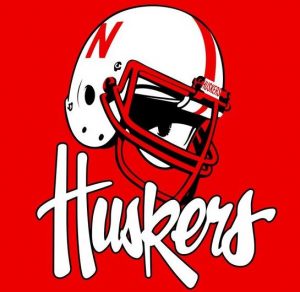
Q: And as far as players, do you have any favorite guys over the years that come to mind?
MM: Oh shoot, there are so many of them. I don’t want to single anybody out, but just guys like Andre McDuffy. He didn’t play a whole lot, but just a great guy. We’d actually go out with him every once in a while to the bars and stuff. I’d give him crap about being the only black Irishman I ever knew. (laughs) You could joke with him and all. I mean, his last name is McDuffy! Come on!
And the (Matt) Vrzal’s and guys like that: small-town guys from Grand Island, 60 miles from where I grew up. Just guys like that. All sorts of guys from high school days I used to play against: Jim Wanek and Tom Haase from Aurora, I played against those guys in high school and they were seniors when I was a sophomore, but I got lit up by Wanek in one game. Old Jim Wanek and Tom Haase.
Q: Were there any pains in the rear? Nuisances? Maybe in a good way?
MM: Oh yeah, some. Those are the guys you tend to forget. There’s always, without fail, two or three guys in every class coming in who would always try to pull one over on you. But once they figured out you’re on to them and you give ’em a little crap, they go, “Oh boy, you figured me out.” But there were other guys, no matter what you did, they never gave up. They’d always try to get an extra pair of shoes from you. There was one little guy, a cornerback from Louisiana -I can’t remember his name- he was trying to pull something over on me one day and I was, ‘Man, come on! Do you think you can pull one over on me like that?’ And he said, “Man, why do you always have to put salt in my game?” (laughs) I’ll never forget that one. I can’t remember his name, but I’ll never forget that: “Why do you have to put salt in my game?” He didn’t play a lot. I can see his face, but I just can’t remember what his name was.
Q: I’m betting that over the course of your time there you’d taken care of over a thousand guys…
MM: Oh yeah, with eighty or so guys each year including the walk-ons, that’s something like a thousand guys over the years.
Q: Heck, that’s about the size of Ord, isn’t it?
MM: Well, Ord’s about 2,600 population, but it’s getting there. (laughs)
Q: So during games you were on the sidelines, right?
MM: Yeah, basically we were there if a helmet broke. We’d fix it.
Q: In the case of Cory Schlesinger?
MM: Yeah, oh boy! In his case you had to watch and make sure his facemask didn’t break. Oh man, that guy was nuts. His facemask was the point of impact. I think we had to change his facemask every week. By the end of the week his facemask would be flat, because that’s what he hit with: either his head or his facemask. That’s why we called him RockHead. Billy Legate was pretty much the same way; we had to change his all the time, too.
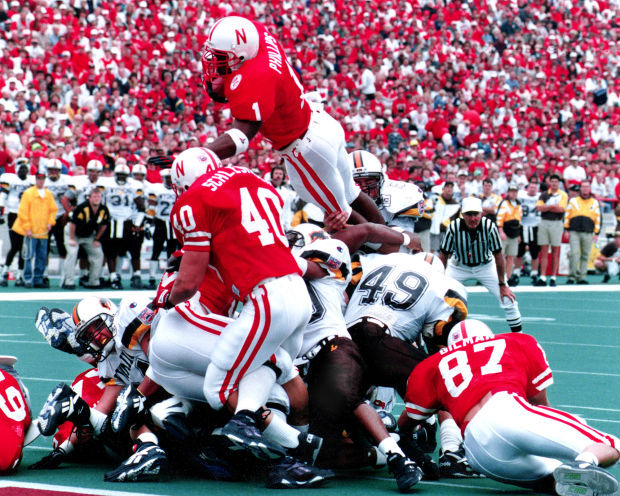
And as far as running backs, I’ll tell you what, one thing I always get questions about is Lawrence Phillips, “That guy must have been a jerk?” I’m like, ‘He was the nicest kid you could ever meet. I never had a problem with Lawrence. Never.’ That’s another guy who appreciated stuff we gave to him. He never asked for anything. He didn’t come from anything, you know? And I always tell people, ‘If that kid never would have drank alcohol he probably wouldn’t have had half the problems he did.’ That’s a shame, because the kid had more talent than any running back I ever saw. At the time I was there we had some pretty good running backs: Calvin Jones, Derek Brown, Ahman Green, Damon Benning, the list goes on and on. He was the best one I ever saw. Some people might say, “He wasn’t that fast, though.” Well, he may not have been 40 yard-fast, but he was football-fast. He went as fast as he needed to go. Nobody was going to catch him.
And another thing: everybody gave Coach Osborne a rough deal about that, but he was just trying to help that kid. That was his whole intention. The structure of the team and being around the team, that’s what the doctors thought would be the best for him. It wasn’t what Coach Osborne thought would be the best thing for him, it was what others thought would be the best thing for him. It wasn’t about the wins or Coach Osborne wouldn’t have suspended him for however many weeks he was suspended. It wasn’t like we needed him, you know? We had Ahman Green at running back and Benning and Clinton Childs. It wasn’t like we didn’t have a bunch of guys who could replace him. James Simms, too. We had enough guys who could have played for anybody. Coach Osborne was all about helping the kids, you know?
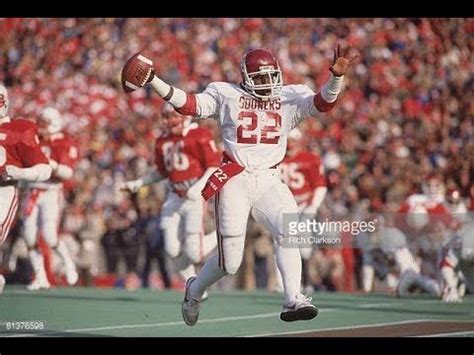
Q: And obviously, you’d go to away games, too. Any favorite places?
MM: Hmmmm, not Colorado, not Iowa State, not Kansas State. It was Oklahoma and when we started playing Texas. There was a mutual respect between us, and those two teams and I got along with the equipment guys pretty well. We’d go out to eat with them when we were in town and do whatever else, and if we needed anything they took care of us. And if they needed anything when they were in our house we took care of them.
Some of those other schools, they hated us. We just pounded on them for so many years -and they’re not going to say that- but you just got that feeling when you got there. It wasn’t just the crowd, sometimes you wouldn’t get treated well. They wouldn’t come out and say it, but you could just kind of feel it. The guy at Kansas State was awesome, Shorty. But I hated their fans. They were terrible down there.
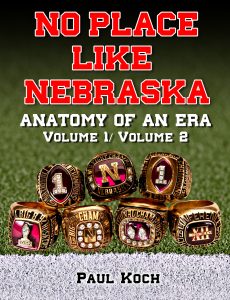
Available on Amazon.com
Q: Who were the worst fans you encountered?
MM: Colorado would be way up there. In the late ’80s and ’90s they were the worst. And in fact, Kansas State and Missouri fans were the worst in the Big 12 North and Texas Tech was the worst in the South. Throwing stuff at you and f-bombing you at every turn, too.
Even people I knew who were in the stands, too, they were just treated like crap. Missouri, especially. Things I’ve witnessed in parking lots after games, too. And it wasn’t like that until they started beating us here and there. The same thing with K-State. K-State especially, when we’d go home after they beat us one year -there’s one town where you had to turn right about 30 miles north of Manhattan- and here we were riding the bus back to Lincoln and there were about 30 or 40 people there with a big sign that said, “Losers turn right here.” I mean, what’s that about? Seriously! And this little podunk Kansas town, you know? Come on!
Q: They’d probably painted that sign thirty years ago and couldn’t wait to finally use it for once?
MM: I’m sure they had, but give me a break. That’s loser stuff right there. No class. Come on. Lose with class and win with class, and that’s the way Nebraska has been forever. If they have the right people there that’s the way it will be, too, in the future.
Q: I was talking to Nutritionist Dave Ellis and he was telling me about actual ears of corn getting thrown at you on Missouri’s sidelines…
MM: Uh-huh. You were lucky if it was just corn getting thrown at you. I mean, it was liquor bottles… it was just brutal. That year was probably the ’97 game, that year with the flea-kicker. And I actually wasn’t at that game. My daughter was born on that day and I was in Lincoln watching it on TV and they were getting pelted with stuff. The guys on the sidelines were wearing helmets the whole time because they were getting stuff thrown at them right and left. It’s mostly students. My wife used to go to a few games and she’d tell me stories of stuff that happened during the games, and even with kids by her. It was horrible. There’s bad fans wherever you go, but there are really bad fans there. I’d just as soon beat them by 50 points every time we’d play them.
Q: Any favorite bowl game stand out to you?
MM: The Orange Bowl was always fun.
Q: That place would get crazy…
MM: The old Orange Bowl, that was not a nice place to go. (laughs) It was nice to go sit down on North Beach for a week or ten days or whatever, and then they moved it to Pro Player in ’95 or ’96, that was a great venue. I went to the Orange Bowl like 5 times, went to the Fiesta Bowl, the Citrus Bowl one time, and the Holiday Bowl was good, too. If I had to pick a favorite it would have to be the Orange Bowl, because you had the beach and the ocean and an awesome hotel.
Q: And a national championship.
MM: Yeah, and back in the Big 8 days if you went to the Orange Bowl that meant you won the Big 8. And only a few times we went there we weren’t playing for the title.
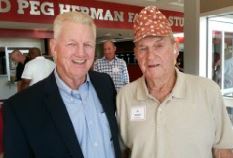
Q: Any good sideline moments?
MM: I can tell you one about Charlie McBride in the ’96 Orange Bowl against Virginia Tech: Jason Peter’s helmet got ripped off, and a running back took off and ran for 40 yards or something like that, so Jason is chasing him down the field without a helmet. So the helmet’s all the way back on the other end of the field and McBride yells at me, “Get your butt out there and get that helmet off the field!” I look at him and go, ‘They won’t allow me out there.’ (laughs) (And by this time Jason was almost to the helmet anyway) And McBride says, “If that happens again you get your butt out there. We don’t need him running after his helmet!” Other than that, nothing too crazy happened on the sideline, I guess. (laughs)
End conversation.
Spanning a score of life working in the bowels of Memorial Stadium, one of the topics that caught my attention was Mike’s mention of the sheer numbers of student-athletes in those days. Can you imagine 255 football players crammed into the stadium’s two locker rooms in the early ’90s? The logistics boggle the mind. From suiting them up to feeding to healing them up to building them up to coaching them up, it was a tenuous ballet of time, energy, man-power and team-wide orchestration that kept it from devolving into chaos. Then, just previous to the 60 & 3 era sprouting its legs, there was the downsizing of sorts. With the NCAA limiting coaching staff positions the freshman team finally had its curtain call. What remained was a lighter, leaner squad number, affording the organization greater efficacy by focusing their efforts and attentions on fewer kids. Having been thoroughly versed in efficiencies due to the previous numbers, the staff could now pour more of themselves into and spend more quality time with the more manageable 150 or so. This mere fact, by itself, had a hand in creating conditions for the great 60 & 3.
Of curious note, this 150 figure happens to possess a profound relevance. Why do I say this? Well, in the course of writing this book I chose to take a rare evening off to attend a book-reading by noted author Sebastian Junger, author of The Perfect Storm, A Death in Belmont, director of the movie Restrepo, and writer of its brainchild, War, his account of the United States Army’s fight against the Taliban militia in Afghanistan’s Korengal Valley (the War on Terrorism’s ground zero of wartime action). In meeting and speaking with him, he shared his purpose as an embedded war reporter, which was to get at the heart of what made a unit of soldiers’ bonds so incredibly strong and what motivated them to not only stare death in the face, but to slap it as well, if given the chance. In the course of his study, he came upon Oxford University’s evolutionary anthropologist Robin Dunbar, for whom the term ‘Dunbar Number’ was named. By triangulating the three points of 1)the size of the human brain into 2) social grooming (interaction) and the 3) maximum group size possible to maintain reasonably meaningful relationships, he came to the number of 148 (I’ll round it up to 150). Going back to man’s long history of community sizes and military unit make-ups, his 150 number seems to be the maximum amount a group, or team, can withstand in which members are able to positively and effectively interact without a breakdown in group cohesiveness. Junger’s book War states, “Neolithic villages in Mesopotamia were thought to have around 150 people. The Roman Army of the classical period used a formulation of 130 men –called a maniple, or a double century- in combat. Hutterite communities in South Dakota split after reaching 150 people because, in their opinion, anything larger cannot be controlled by peer pressure alone.” So there you have it. Whether by design or not, the number 150 not only served as a boon for the proper number of practice able bodies, but also for social cohesion and maximum buy-in to the ‘Unity, Belief, Respect’ mantra without a drop-off in morale. Was this number a pre-planned figure? If such was the case, it was pure, unadulterated genius.
Lastly, even a Porsche accomplishes little without a good set of tires, and the same can be said for the behind-the-scenes work of the equipment managers in their shoe-altering feats. Sure, it wasn’t fun nor easy grinding all of them down, but did you notice the synergy between the equipment room and the training room, with Sully and the crew casting a discerning eye at injury prevention while ever keeping in mind the performance factors of the footwear? I would hazard to guess that Nebraska may have been the one of only a few institutions of higher yearning to have gone to such extreme and exhausting measures in getting a leg up on the competition. (pun intended)
Notable quote #2:
Mike Mason on the team culture: “…just the way they carried themselves, you knew they meant business out on the field… It didn’t take long before there was some intimidation going on. But I don’t think they were cocky, they were very confident in what they were doing.”
Copyright @ 2013 Thermopylae Press. All Rights Reserved.
Photo Credits : Unknown Original Sources/Updates Welcomed
Author assumes no responsibility for interviewee errors or misstatements of fact.